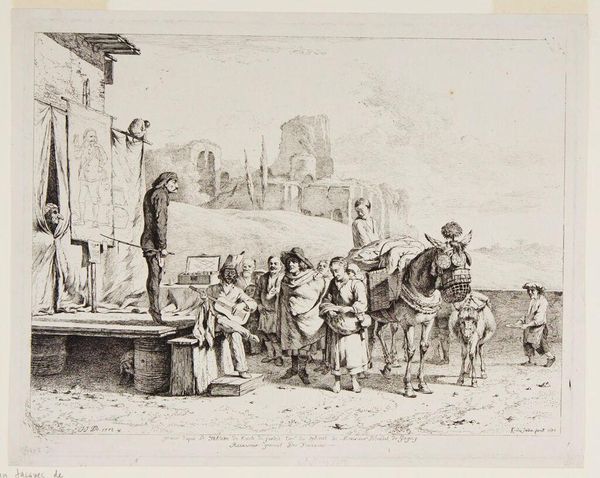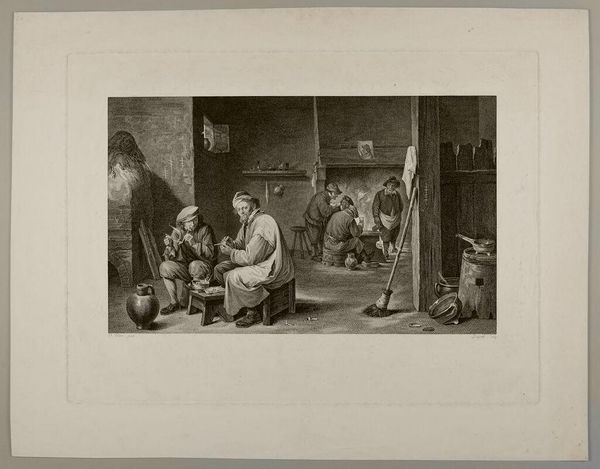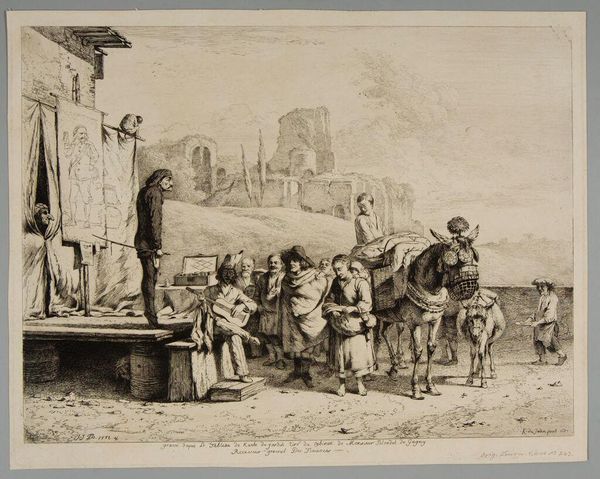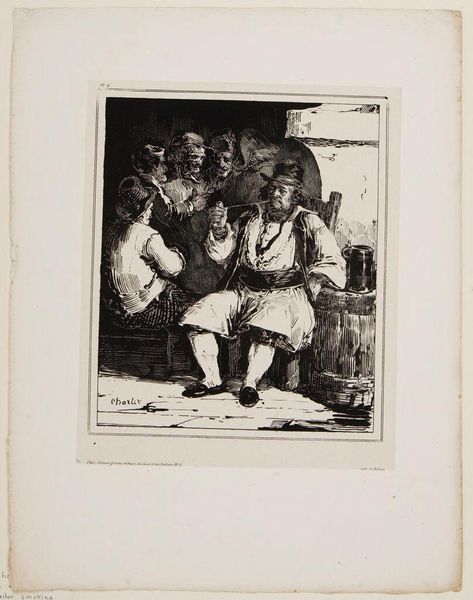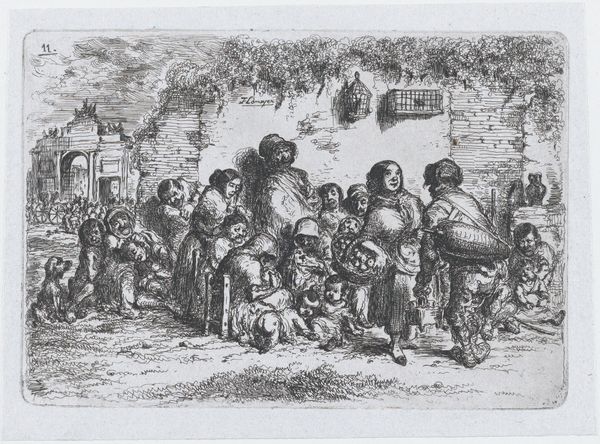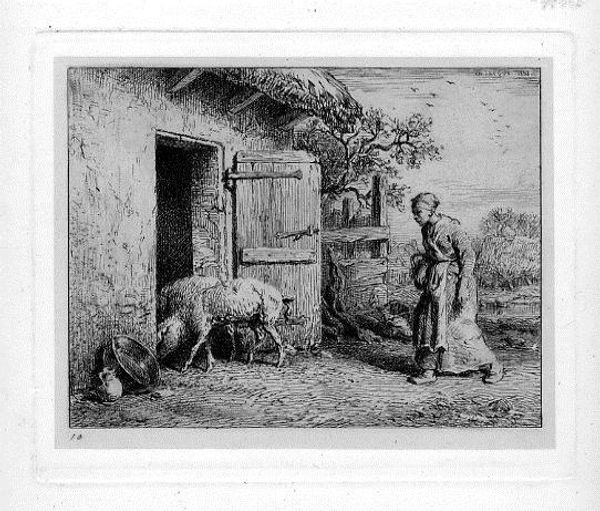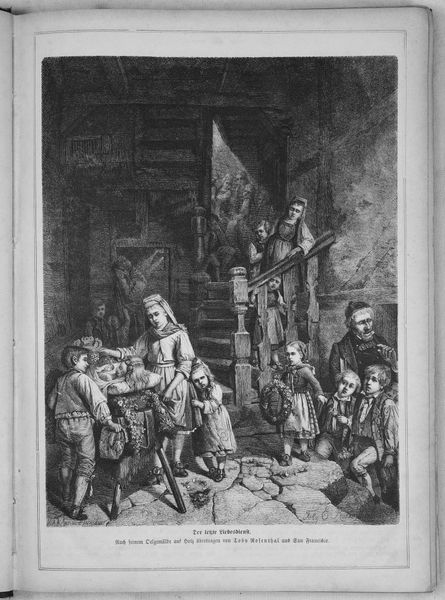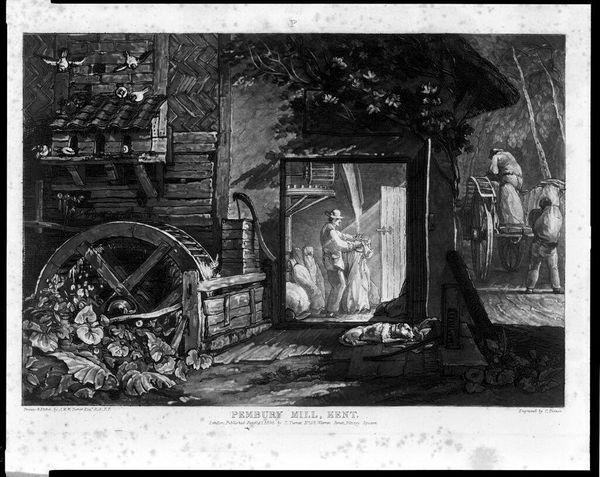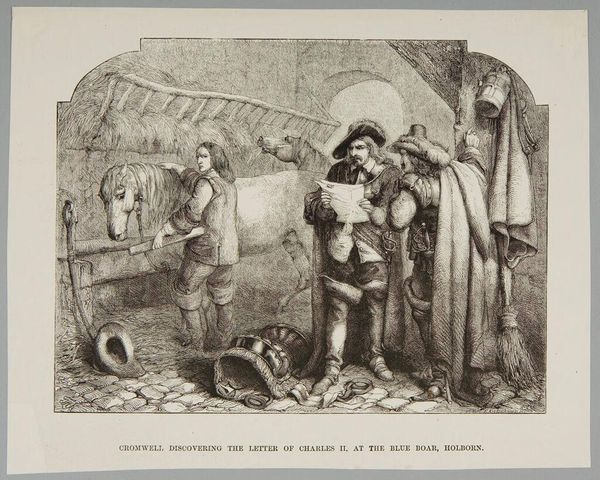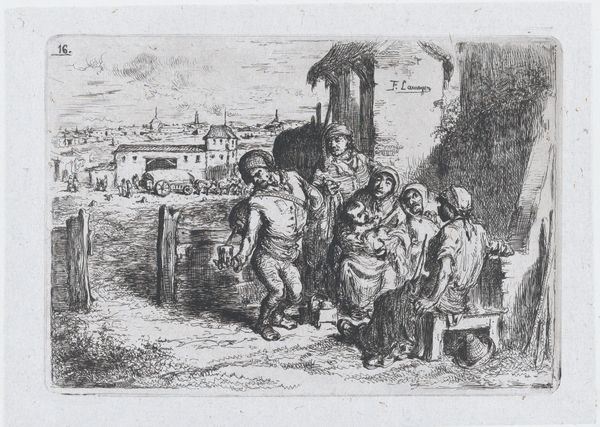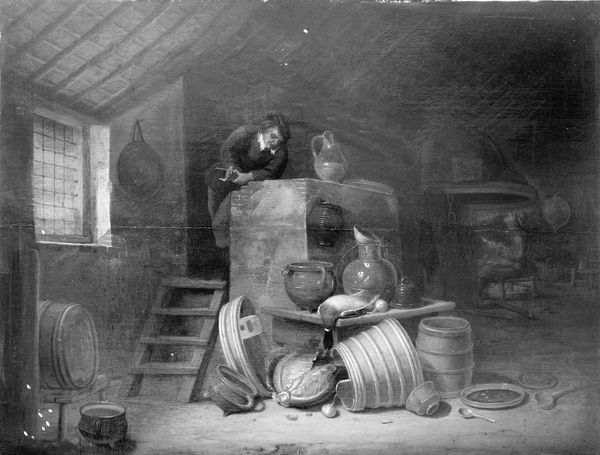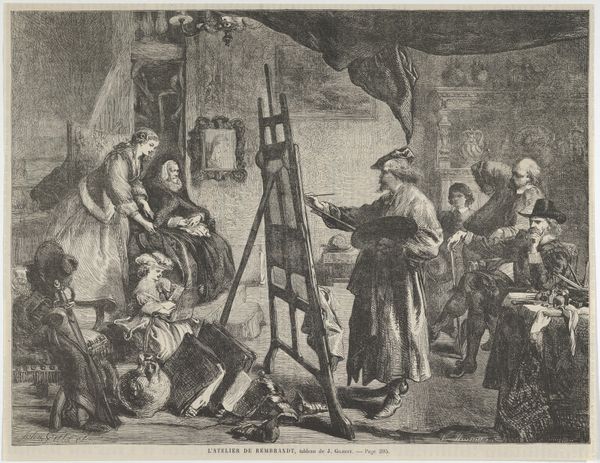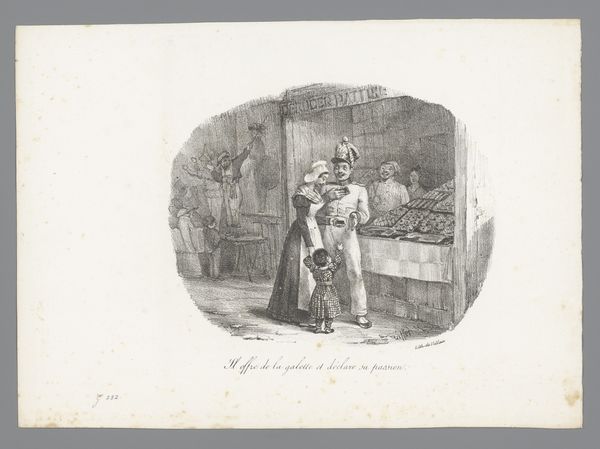
drawing, print, engraving
#
portrait
#
drawing
# print
#
group-portraits
#
costume
#
genre-painting
#
engraving
#
realism
Copyright: Public domain
Editor: So, this is an engraving from 1880 by Fyodor Bronnikov, originally titled "Ausgewiesen." The figures look distressed and the mood is rather bleak; everyone seems caught in a downpour. How do you interpret the expressions and composition here? Curator: What immediately strikes me is how this “genre-painting”, as it is labelled, offers a glimpse into social displacement and power dynamics in late 19th century Russia. The figures, seemingly ordinary people, are positioned against the backdrop of what appears to be a forced eviction, their expressions reflecting a mix of resignation, anger, and despair. Consider the role of the figures in uniform – what kind of authority do they represent and how is this manifested within a broader context of Russian social and political hierarchies? Editor: The uniforms definitely add to a sense of authority and maybe even intimidation. So, this is more than just a scene of people in the rain. Curator: Exactly! It makes us ask who is being "ausgewiesen"– the evicted—and by whom? Look at the figures huddled together; do they share common cultural or ethnic markers? Perhaps clues in their dress or in their postures might allow us to speculate about which communities were most vulnerable to such treatment at this historical juncture. We need to consider how Realism was being used in art to highlight certain issues, offering a social critique, a commentary. What do you think? Editor: It sounds like the print serves as commentary. Something that may spark reflection even today about the impact of power on marginalized people. Curator: Yes, by dissecting visual narratives we can ask complex questions. Analyzing representations such as this, reveals the ways in which identity, power, and social injustice intersect and shape lived experience. Editor: Thanks, I definitely see much more than I did originally. Curator: Of course. Recognizing those layers invites a deeper understanding of art’s place in the past and how that past resonates even today.
Comments
No comments
Be the first to comment and join the conversation on the ultimate creative platform.
